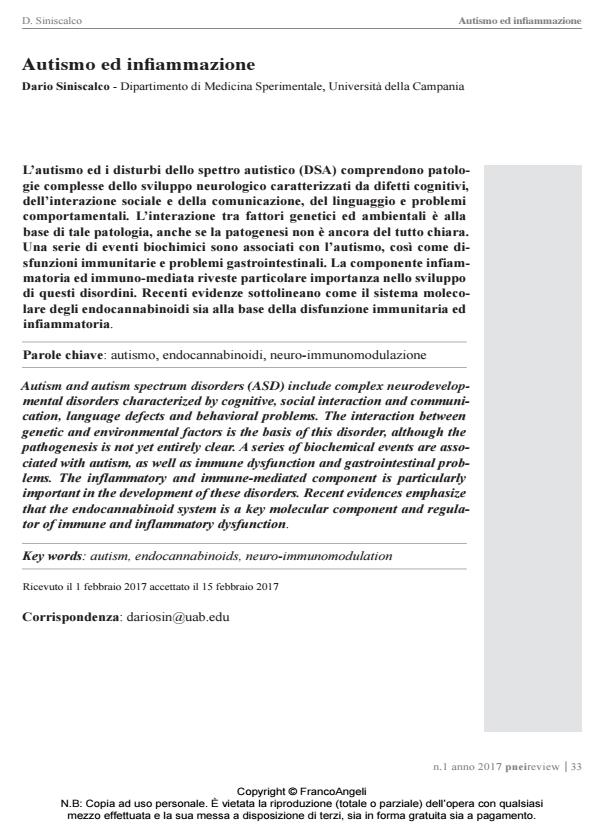Autism and inflammation
Journal title PNEI REVIEW
Author/s Dario Siniscalco
Publishing Year 2017 Issue 2017/1
Language Italian Pages 8 P. 33-40 File size 1093 KB
DOI 10.3280/PNEI2017-001004
DOI is like a bar code for intellectual property: to have more infomation
click here
Below, you can see the article first page
If you want to buy this article in PDF format, you can do it, following the instructions to buy download credits

FrancoAngeli is member of Publishers International Linking Association, Inc (PILA), a not-for-profit association which run the CrossRef service enabling links to and from online scholarly content.
Autism and autism spectrum disorders (ASD) include complex neurodevelopmental disorders characterized by cognitive, social interaction and communication, language defects and behavioral problems. The interaction between genetic and environmental factors is the basis of this disorder, although the pathogenesis is not yet entirely clear. A series of biochemical events are associated with autism, as well as immune dysfunction and gastrointestinal problems. The inflammatory and immune-mediated component is particularly important in the development of these disorders. Recent evidences emphasize that the endocannabinoid system is a key molecular component and regulator of immune and inflammatory dysfunction.
Keywords: Autism, endocannabinoids, neuro-immunomodulation
Dario Siniscalco, Autismo ed infi ammazione in "PNEI REVIEW" 1/2017, pp 33-40, DOI: 10.3280/PNEI2017-001004